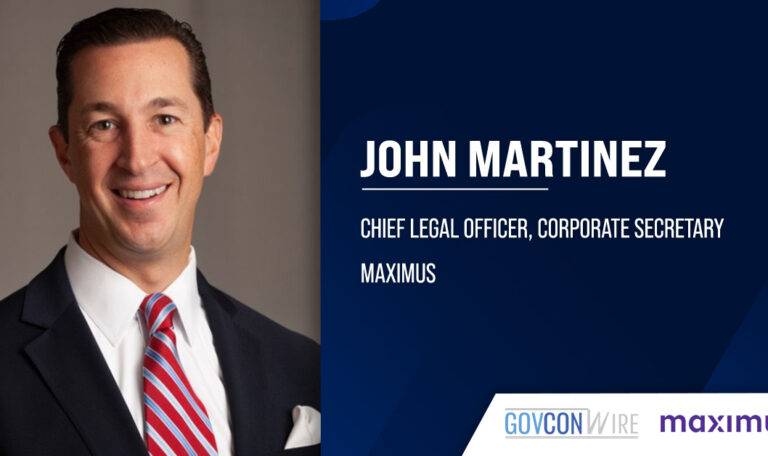As space continues its transformation from a peaceful domain to one defined by satellite proliferation, rising tensions and technological advancements, U.S. space leaders are learning how to navigate classification barriers and balance risk with reward while exploring how to best leverage commercial innovations in a constantly evolving environment.
Wash100 Award winner Robert Cardillo, chairman of the board for Planet Federal and former director of the National Geospatial-Intelligence Agency, said he’s seeing a significant shift, both from classified to unclassified operations and from limited to open access to technology.
During his time at NGA, “a top secret question became a top secret task, became a top secret image, became a top secret report,” Cardillo shared in a panel discussion during the Potomac Officers Club’s 2nd Annual Space Intelligence Forum. “There was a good reason everything was top secret then. We had capabilities, we had access that the adversary didn’t have and we wanted to protect those,” he explained.
Now, with much more uniform and open access to technology across the globe, paradigms are shifting and the U.S. is reexamining its strategy surrounding classification and information.
“How can we, in this global competition, compete in a way that emphasizes the strengths of the American system?” Cardillo posed. “If we’re going to compete with China, I think the more transparent the environment, the better it is for us. I think this is much less of a technical challenge than it is a mental and a cultural one. We need to find a way to get comfortable in what used to be a very uncomfortable situation, which is dealing outside of our classified facilities.”
The persistent focus on China in recent years is both widespread and relatively new. U.S. defense agencies, including space-focused agencies, have centered their strategies around counter terrorism for the past two decades, but now, we’re seeing a major shift in priority to the near-peer adversary fight.
This is the backdrop against which U.S. commercial capabilities are shifting, sparking new opportunities and challenges for federal agencies looking to harness these capabilities, according to Nicole Robinson, president of Ursa Space Systems.
“Gone are the days of needing to debunk that myth of what and how will we use commercial versus for what purposes will we use national. It’s now more of a question of how do we view this as a combined architecture of capabilities and really extract next-gen capability as a result,” Robinson explained.
David Taylor, who is performing the duties of deputy under secretary of defense for intelligence and security for the Department of Defense, said this shift from “if” to “how” the U.S. government will integrate commercial capabilities is prompting federal leaders to examine how it can use the private sector in more complex, less peaceful scenarios.
“We need to understand how we leverage commercial capabilities across the range of the spectrum from competition all the way, if necessary, into conflict. How do we use commercial during times of conflict? And what does that really mean?” Taylor asked.
These questions cannot be answered by government alone; Taylor asserted that federal agencies need to bring the private sector “along for the ride” and work together to develop strategic frameworks, establish requirements and integrate advanced technology. In this effort, interoperability is key.
“Leveraging commercial and stitching that in with national capabilities, we need to have this discussion about open architectures, compatible systems that can integrate easily with what we are currently programming,” said Taylor. “We’re a remote business. It’s not like you can just drive a car up and go fix it and make it sure it’s integrated with the next thing. We have to be able to have software defined capabilities and things like that that are easily integratable.”
Solving the interoperability problem is ultimately about better supporting warfighters and operators with the insights and information they need to protect our nation in what is now a volatile domain.
In today’s data-driven world, Robinson said data is not actually the end point, but a stepping stone or a tool. “It’s rarely about raw data anymore,” she said. “It’s about the insights, it’s about the rapid decision making that can happen from receiving analyzed data — shifting from pixels to insights.”
The private sector is already starting to use analyzed data to produce insights that can help “connect the dots” between industry and government, according to Robinson. On the federal side, these insights are being used to track the threat.
Recently, the U.S. Space Force stood up its National Space Intelligence Center, taking over the space intelligence mission from the Air Force’s National Air and Space Intelligence Center, which has performed the mission for the past six decades.
Col. Marqus Randall, the first commander of NSIC, said the center’s overarching mission is to enable space dominance not necessarily through data collection, but through education on the threat from space.
“Whereas NGA and NSA and NRO focus on data collected from space, NSIC, as the Space Force’s service intelligence center, is solely focused on threats from space and obviously threats to space systems,” Col. Randall explained.
“We’re building the space war fighting culture to better tailor our assessments, to impact the decisions made, as well as to help those joint war fighters and inform key acquisition decisions,” he added.
As the leader of NSIC, Col. Randall is also prioritizing information sharing and tackling classification issues in order to better align and collaborate with the Space Force’s partners, allies and joint forces.
The full 2022 Space Intelligence Forum, including Brig. Gen. Gregory Gagnon’s keynote remarks and the panel discussion, is available to view on-demand now. Click here to watch.

Join the Potomac Officers Club’s 5G Forum on Sep. 13 to learn more about how the federal government is harnessing 5G as technology continues to advance at a rapid pace. The Army’s deputy chief of staff, Lt. Gen. John Morrison, is slated to keynote. Register here.
















